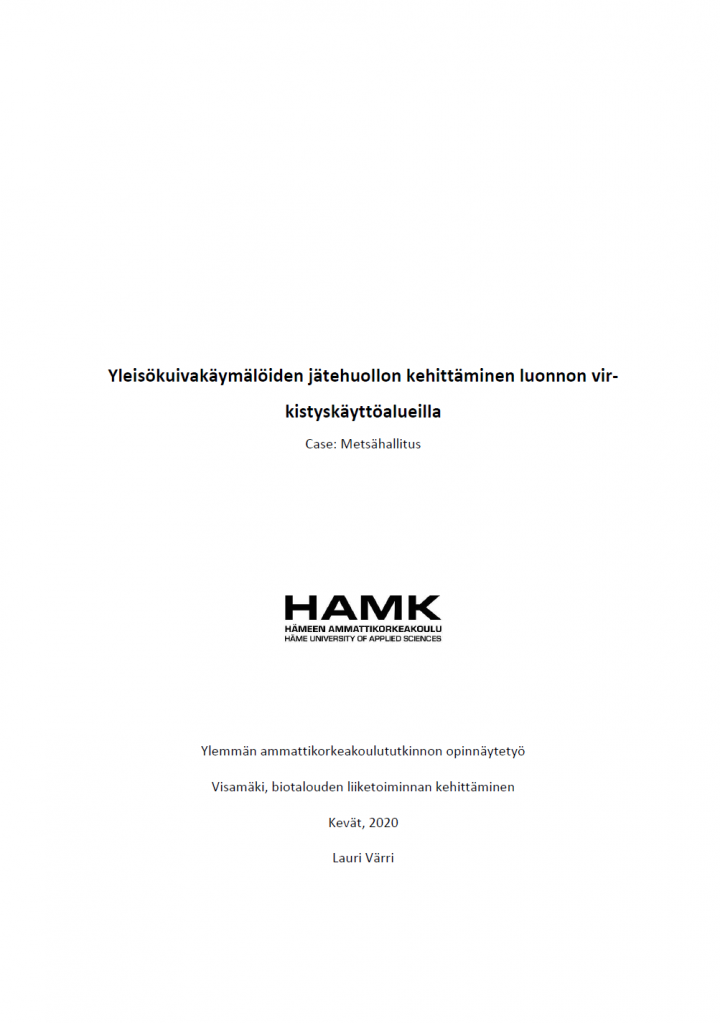Yleisökuivakäymälöiden jätehuollon kehittäminen luonnon virkistyskäyttöaluei (in Finnish) - Development of public dry toilet waste management in recreational wilderness areas, Case: Metsähallitus
Värri, L. (2020)

Published in: 2020
Pages: 198
Publisher:
HAMK
Author:
Värri, L.
Uploaded by:
SuSanA Admin
Partner profile:
common upload
913 Views
8 Downloads
Dry toilets are one of the basic services provided for visitors in recreational wilderness areas. Operational environment for toilet waste management in these areas is challenging. At the same time the growing number of visitors in recreational areas is increasing the stress and loading on service infrastructure etc. toilets. The objective of this study was to recognize the major challenges in toilet waste management in recreational wilderness areas and to find alternative solutions to solve them. Study was commissioned by the Metsähallitus Parks & Wildlife Finland.
This study consists of toilet waste management surveys done in Finland, Sweden and United States, proposed decisions on toilet waste management on Finnish nature reserve areas and calculated estimates of potential nutrient loads to the environment.
Overall duration of the visits and the management of liquid toilet waste are the key issues when estimating the potential nutrient load. Meeting the requirements of the national law and regulations are hard or even impossible to achieve with available technology. On the other hand, the special characteristics of operational environment are poorly taken into account in current waste management regulations. To reduce the environmental risks and hazards for public health and work safety, more focus should be directed into reducing the amount of liquids containing fecal pathogens, like leachate. It is suggested that using urine diversion toilets and on-site urine processing, e.g. a small septic field, should be started. That would reduce negative environmental impacts but also would improve working safety and public health in national park dry toilets.
Bibliographic information
Värri, L. (2020). Yleisökuivakäymälöiden jätehuollon kehittäminen luonnon virkistyskäyttöaluei (in Finnish) - Development of public dry toilet waste management in recreational wilderness areas, Case: Metsähallitus. HAMK
Filter tags
Composting, vermicomposting (solid waste), composting toilets Europe & Central Asia North America Urine diversion dehydration toilets (UDDTs)














